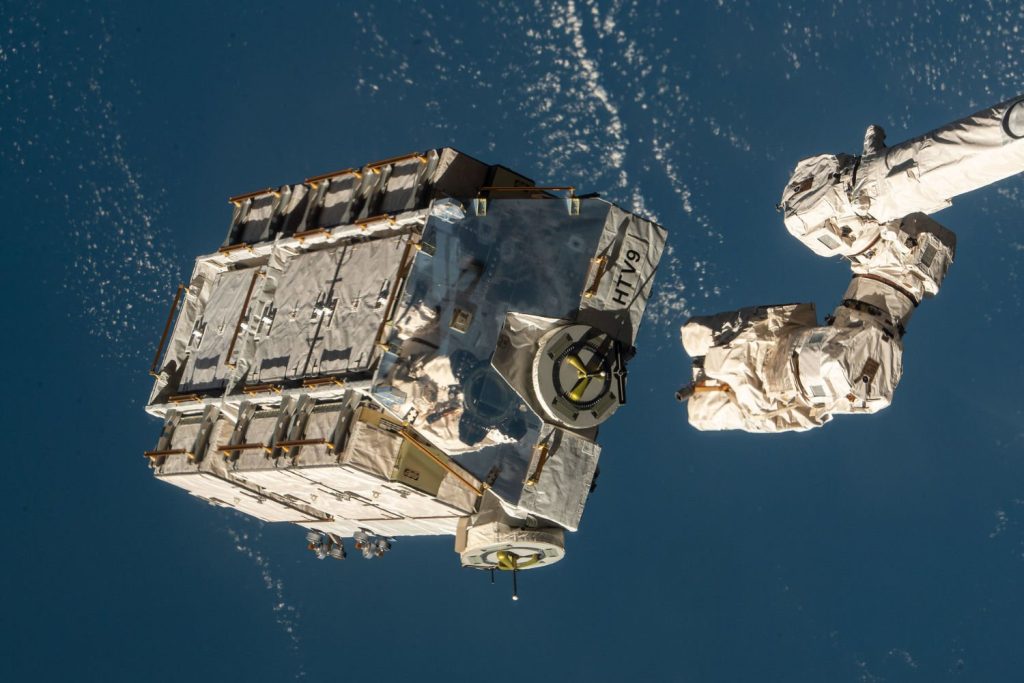Alejandro Otero is an ordinary resident of Naples, Florida. But his house was obviously the landing point of space debris, potentially sent from the ISS. At 2:34 p.m. (local time) on March 8, an object from the sky pierced its roof and passed through both floors of the house.
If the origin of this space debris, weighing around 900 grams, is still unknown, several people quickly assumed that it was NASA debris, coming from the international space station. In fact, the latter announced at 2:29 p.m. the uncontrolled entry into the atmosphere of a 2.5 ton waste pallet. The latter was as big as a minibus. It followed a south-north trajectory, thus going up the Gulf of Mexico.
If the American space agency announced on March 8 that this debris, although it did not follow a classic trajectory, was going to be destroyed in the atmosphere, that is obviously not what happened. An optimistic hypothesis that was not shared by other scientists. A few hours before the drop, the Aérospatiale Corporation warned of the risks inherent in such a procedure.
According to this association of researchers, 20 to 40% of the object would eventually fall back to Earth; the high temperatures reached during the descent would not allow the device to be destroyed as a whole. A few minutes before the start of the school year, it was the European Space Agency which also expressed doubts on the safety of such a return to the atmosphere.
Hello. Looks like one of those pieces missed Ft Myers and landed in my house in Naples.
Tore through the roof and went thru 2 floors. Almost his my son.
Can you please assist with getting NASA to connect with me? I’ve left messages and emails without a response. pic.twitter.com/Yi29f3EwyV— Alejandro Otero (@Alejandro0tero) March 15, 2024
A three-year fall
NASA originally did not plan to throw this pallet overboard. The US space agency is not a big fan of this method and generally prefers to secure the pallets in cargo vehicles traveling back and forth between Earth and the ISS.
But a series of events meant that the last HTV pallet (the one that interests us) ended up without a vehicle. Japan, which until then took care of cargo missions relating to these HTV pallets, ended its flight program in 2020. The other vehicles shuttling with the ISS, including SpaceX’s Dragon capsule, are not designed to receive such a platform.
NASA therefore made the decision, in 2021, to throw this 2.5 ton pallet overboard. The American space agency had not given it any impetus, except the strength of the robotic arm of the ISS. After nearly three years of drifting, the pallet finally re-entered the atmosphere, crossing this hundred kilometers in just five minutes.
Space debris, when the sky falls on our heads
To prevent space debris from falling anywhere on Earth and causing damage, the American space agency monitors tens of thousands of pieces of debris in real time. Each re-entry into the atmosphere is studied, but these debris are generally not equipped with any propulsion system, so they follow a trajectory that is impossible to modify from the ground.
In order to combat this scourge of uncontrolled returns of space debris to Earth, several companies are working on implementing “de-orbiting” solutions. The objective would be twofold. First, prevent debris from wreaking havoc on Earth by changing its trajectory as much as necessary. The second point, just as important, is the cleaning of the space orbit.
The latter is infested by space debris and if the 2.5 ton elements are easy to monitor, because they are very massive, this is not the case for the thousands of bolts, screws and other micro elements which revolve around the Earth at 28,000 km/h. At such a speed, the slightest contact with a satellite would cause serious damage, creating new debris. A vicious circle that government space agencies want to avoid at all costs.
🟣 To not miss any news on the Journal du Geek, subscribe to Google News. And if you love us, we have a newsletter every morning.
